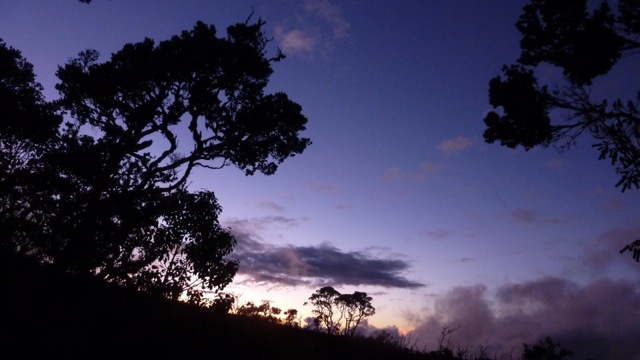In 2016, a rancher on Hawaiʻi Island saw a large swath of his green pastures quickly turn brown. Surveys revealed a new invasive pest and even more damage: the two-lined spittlebug (Prosapia bicincta) had already decimated 2,000 acres of his land in the Kona area. Over the last four years, the infestation has expanded across 175,000 acres of rangeland – an area nearly half the size of Oʻahu.
At this rate, the voracious bug is consuming 35,000 acres of pasture land each year. Maui ranchers are worried that the two-lined spittlebug will make it to our island and damage pastures here.
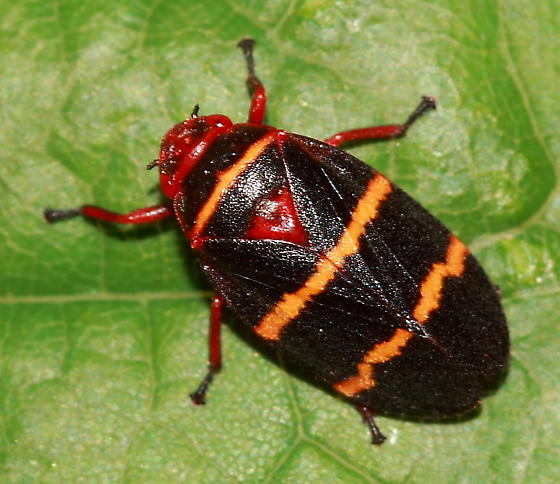
Native to the Eastern United States, the two-lined spittlebug is a recognized pest of pastures and turfgrass in North America and elsewhere in the world. Aptly named for the two bright orange lines on the adult’s black wings, the “spittle” part comes from the white frothy mass that young nymphs make by blowing bubbles out of their abdomen, creating a camouflage defense from predators. Mature two-lined spittlebugs have a deep red head, abdomen, and legs. Nearly a half-inch long, they are highly active, able to jump almost three inches high. The crop damage comes from the bug’s feeding habits. Spittlebugs are sap suckers – feeding primarily on grasses. The saliva of adults contains an enzyme that interferes with photosynthesis and can even kill grasses at the root.
Kikuyu is the dominant pasture grass in the state; about 70% of livestock production relies on this protein-rich food source. Even if this invader doesn’t kill the grass, it can reduce the overall nutritional value and palatability of kikuyu. Kikuyu grass benefits more than just cattle, helping to curb erosion of our watersheds and reduce coastal runoff. Jordan Jokiel, Vice President and Land Manager of Haleakalā Ranch says, “Even though it is not native, kikuyu is a great ally to conservation efforts and key in land stewardship. From grazing, to silviculture, to native reforestation efforts, kikuyu keeps down ecosystem altering weeds, not only in pastures but remnant native forests as well.” When kikuyu and other pasture grasses are weakened or reduced, invasive and cattle-toxic weeds such as blackberry, gorse, crofton weed, and fireweed can move in.
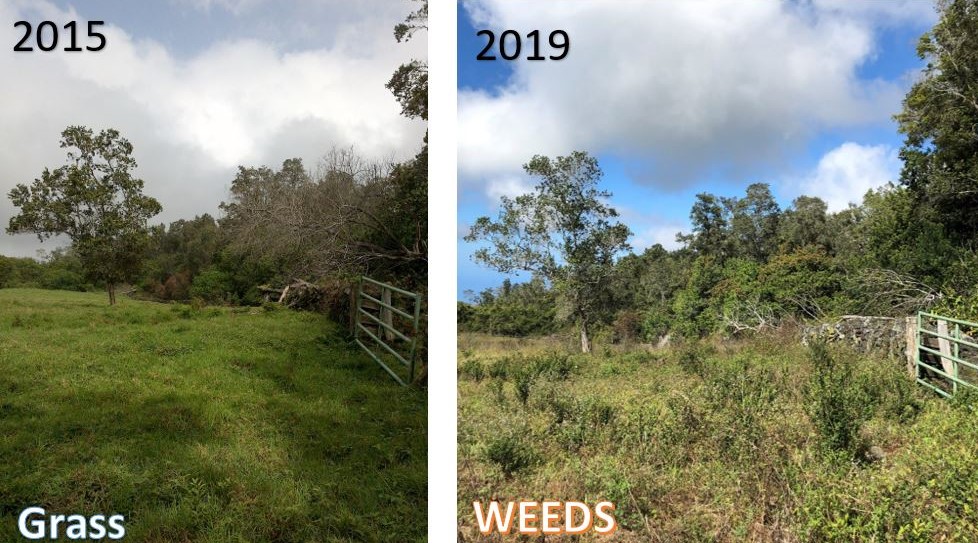
The crippling effects the two-lined spittlebug could have on the state’s $45 million-a-year cattle industry is a significant impact. It would also hinder efforts to increase food security by raising more meat locally. Although not yet on Maui, the fast-paced movement of this pest poses a serious threat. William Jacintho, a fourth-generation rancher and President of the Maui Cattlemen’s Association, says,
The potential impact of the spittlebug on Maui would be huge. With the rate of how it spreads, we’re like sitting targets, not knowing if or when it will hit.”
Prevention and early detection activities are key to stopping this pest from reaching Maui or finding it early when it can still be controlled. To help stop its spread on Hawaiʻi Island and prevent it from becoming established on other islands, the Natural Resources Conservation Service, Big Island Invasive Species Committee, Hawaiʻi Cattlemen’s Council, and the University of Hawaiʻi Extension Service established a working group for research and outreach. Franny Brewer, Big Island Invasive Species Committee Public Relations Specialist, urges the public, “Monitor your lawns and pasture areas and report large patches of dead grass that can’t be explained by environmental factors.” Brewer also encourages people to learn what the two-lined spittlebug looks like. “If you see one, trap it, and report it to 643-PEST immediately.” Jacintho also emphasizes good cleaning protocols to prevent inadvertent spread of the bug. “If you are in any pasture, make sure you clean your boots, equipment, and check your cars and bags. If you don’t have a reason to visit a pasture known to have the spittlebug, don’t go.”
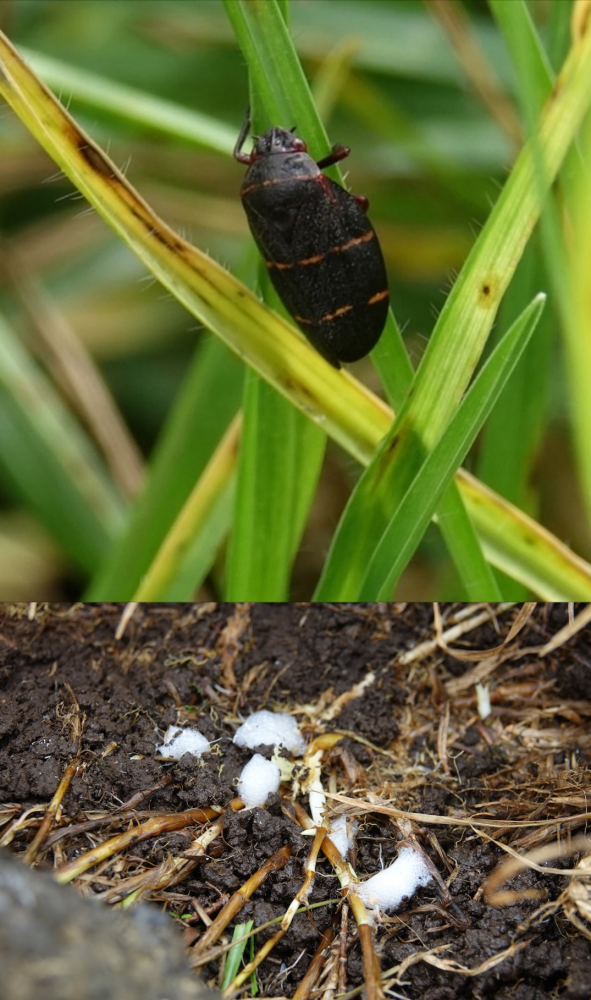
Many new invasive pest species are reported by the public. We rely on the eyes and ears of our community to ensure the protection of our island home. For more information about this pest, visit: Spittle Bug Alert
Serena Fukushima is the public relations and education specialist for the Maui Invasive Species Committee. She holds a bachelor’s degree in environmental studies and a graduate degree in education from the University of Hawaii at Manoa. “Kia’i Moku, Guarding the Island” is written by the Maui Invasive Species Committee to provide information on protecting the island from invasive plants and animals that threaten our islands’ environment, economy and quality of life.
This article was originally published in the Maui News on January 9, 2021 as part of the Kia‘i Moku Column from the Maui Invasive Species Committee.
Read more Kiaʻi Moku articles


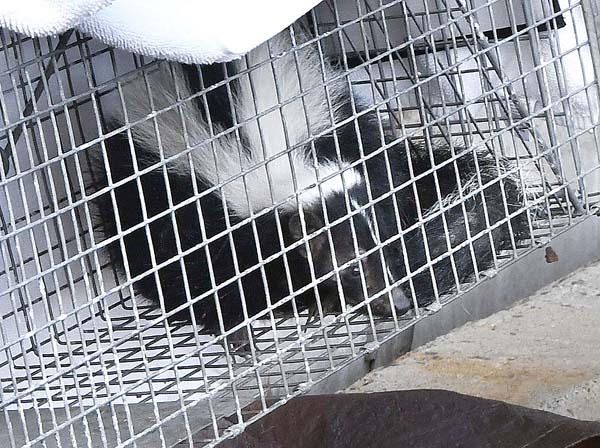
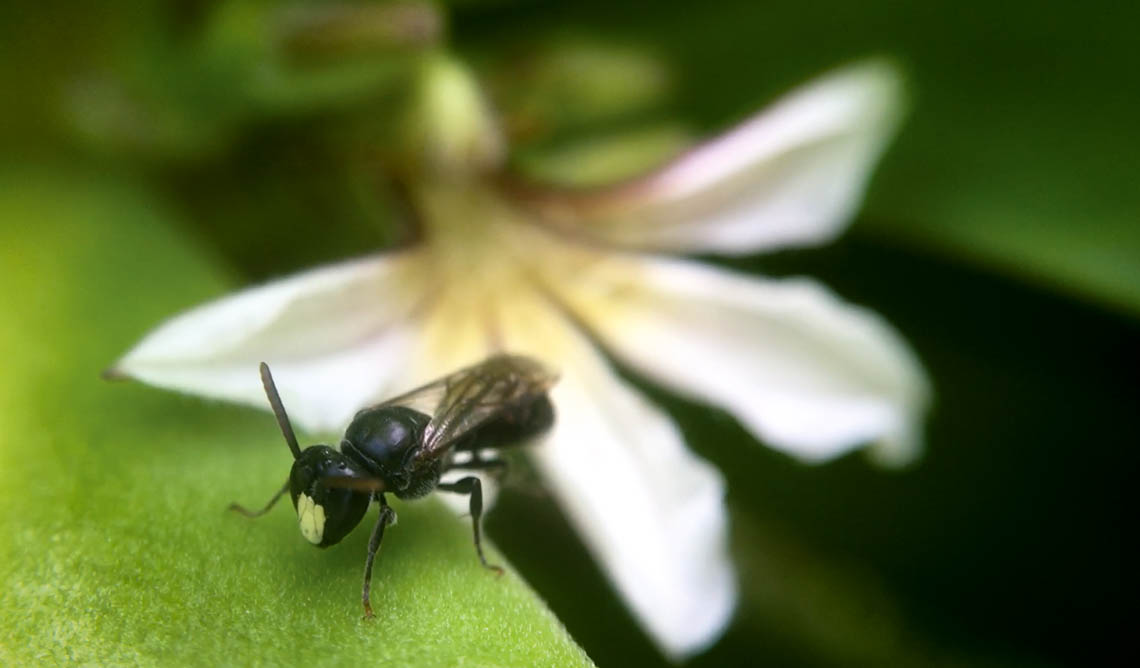
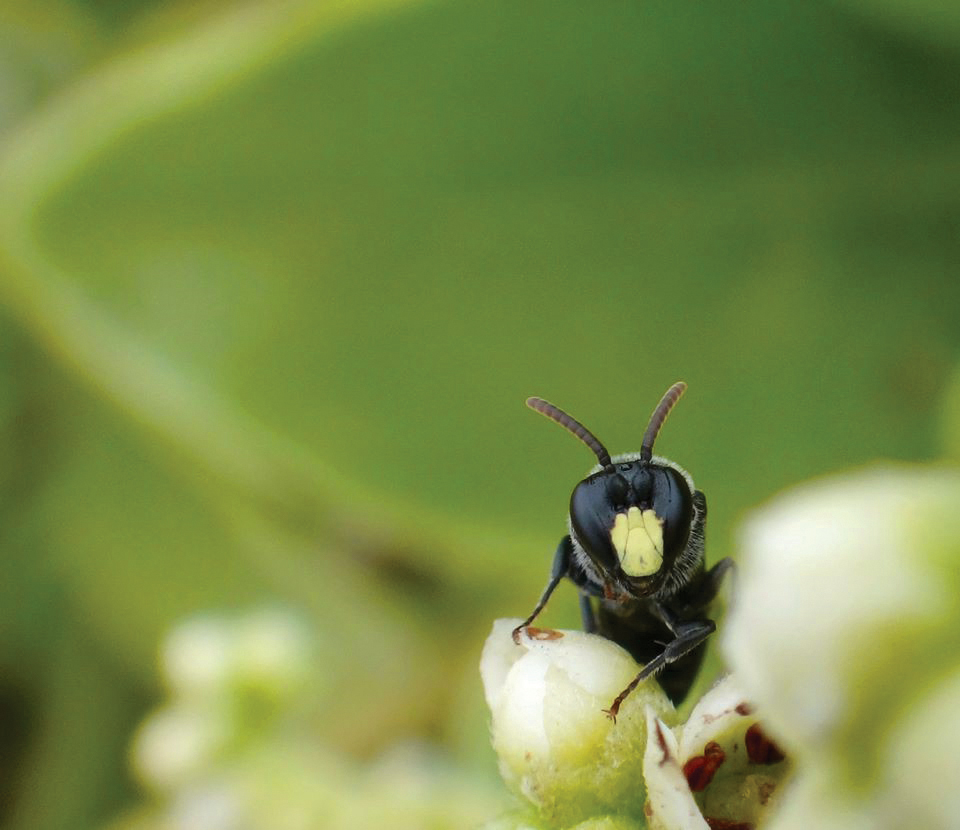
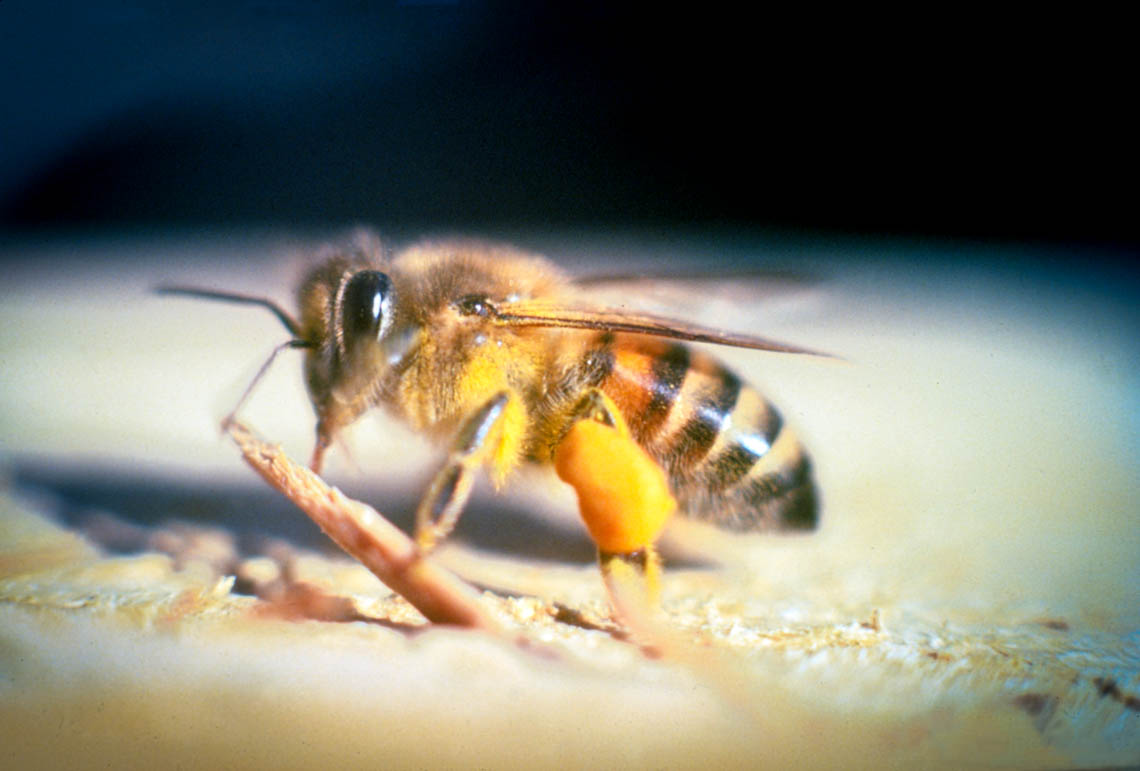
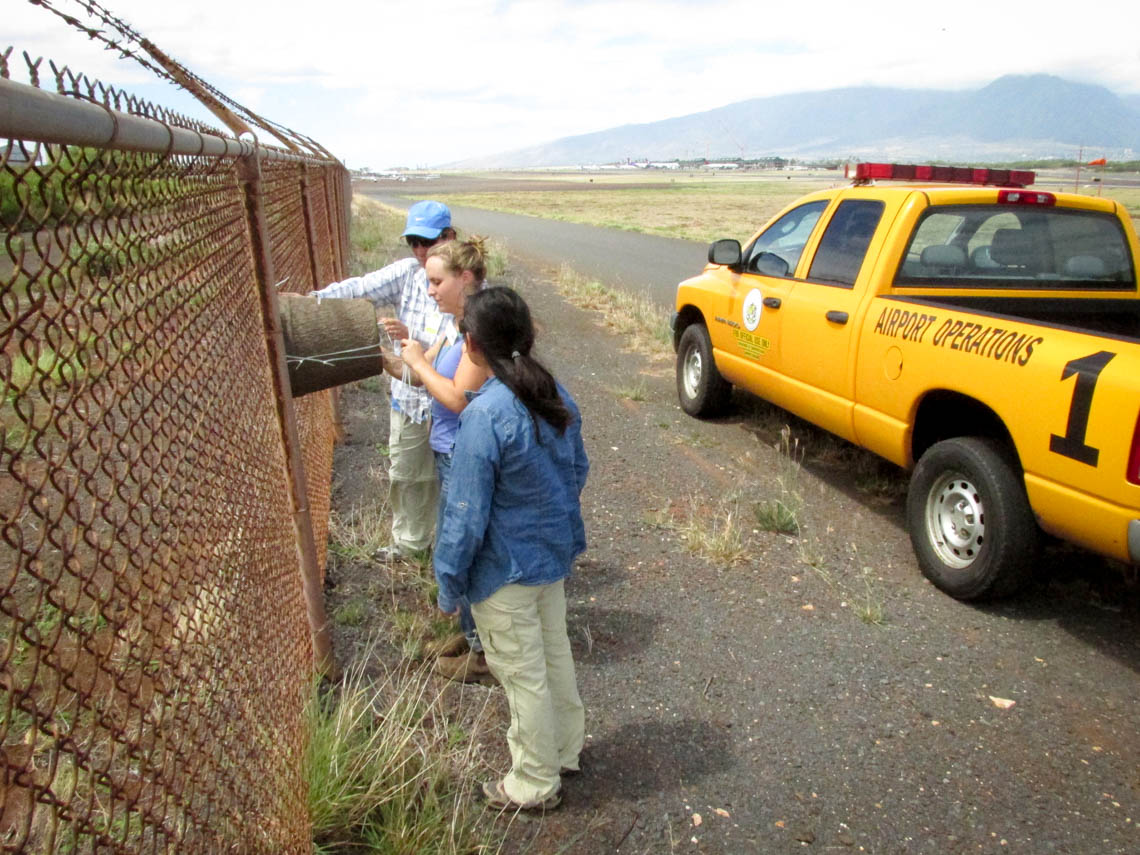
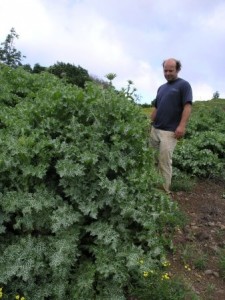
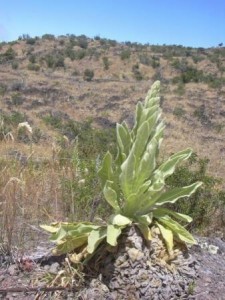

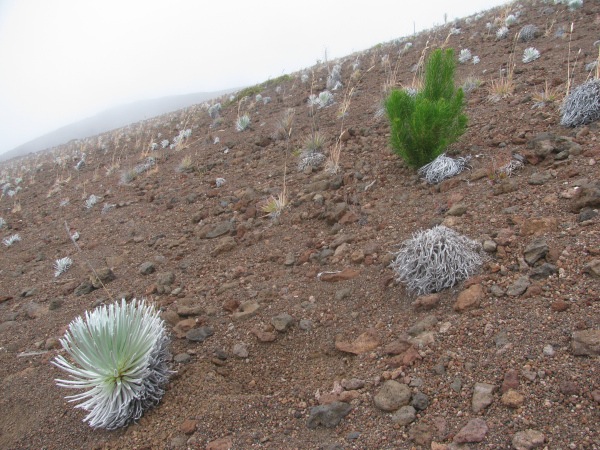
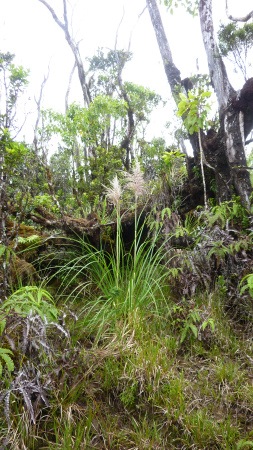
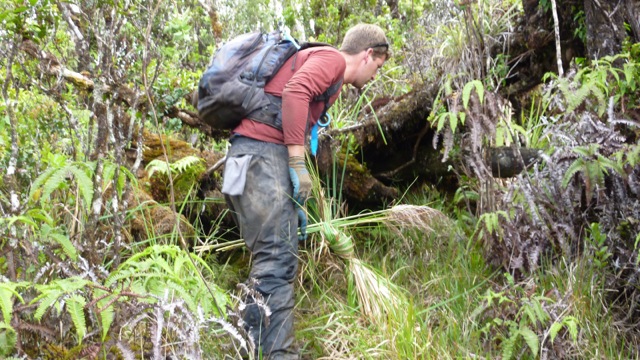 1. Remove the seed-heads.
1. Remove the seed-heads.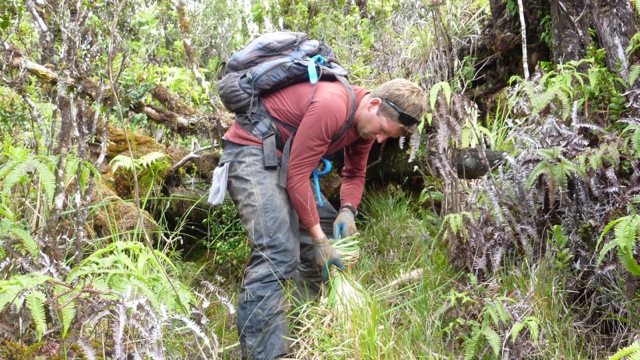 2. Tie the pampas in a knot. this is what we refer to as the “ponytail” method; bringing all the pampas leaves together makes it easier to treat and marks the plant as one we’ve treated.
2. Tie the pampas in a knot. this is what we refer to as the “ponytail” method; bringing all the pampas leaves together makes it easier to treat and marks the plant as one we’ve treated.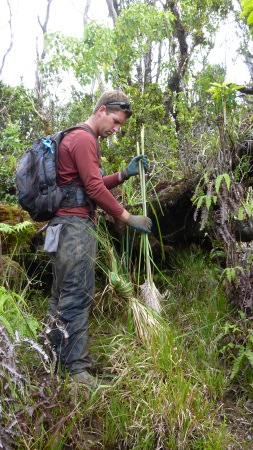 3. Bury the seed-heads deep within the plant. This keeps the seeds from dispersing on the wind, likely how this plant arrived here in the first place.
3. Bury the seed-heads deep within the plant. This keeps the seeds from dispersing on the wind, likely how this plant arrived here in the first place.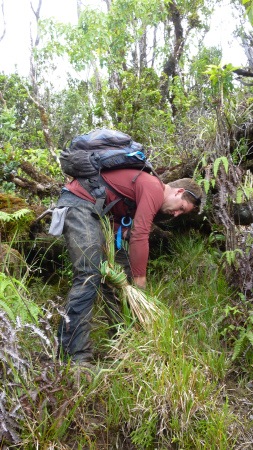 4. With the seed-heads tucked away and the plant tied together crews can apply a low-concentration herbicide directly to the plant (another benefit of the ponytail method-no over-spray). Within a month the plant will be dead and beginning to decompose and native vegetation will be intact and poised to reclaim this patch of invaded rainforest. The location of each plant we control is recorded with a GPS so it can be monitored in the future to ensure no seedlings have germinated.
4. With the seed-heads tucked away and the plant tied together crews can apply a low-concentration herbicide directly to the plant (another benefit of the ponytail method-no over-spray). Within a month the plant will be dead and beginning to decompose and native vegetation will be intact and poised to reclaim this patch of invaded rainforest. The location of each plant we control is recorded with a GPS so it can be monitored in the future to ensure no seedlings have germinated.